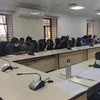How online crowdfunding platform GiveIndia raised Rs 70 Cr in just two weeks of launching its ICRF-2 COVID relief drive
GiveIndia Founder 2.0 Atul Satija spoke to YourStory about COVID-19 relief work and how more Indians are giving to philanthropic initiatives.
Over the past few years, the lexicon of India’s development sector has grown to include terms like ‘crowdfunding’, ‘online peer-to-peer (P2P) fundraising’, and ‘impact investing’. According to a 2019 report in India Development Review, India had the largest number of people (ahead of China and the US) who were volunteering their time and donating money to causes.
Marketing intelligence and advisory firm Mordor Intelligence says that the Asia-Pacific region is the fastest-growing in the global crowdfunding market, which is expected to grow at a CAGR of over 16 percent during the forecast period (2021-2026).

GiveIndia Founder 2.0 and CEO Atul Satija
The outbreak of the COVID-19 pandemic has seen a significant interest in philanthropic crowdfunding, with ordinary citizens, confined to their homes, wanting to play their part in helping those in need and affected by the pandemic. According to various sources, crowdfunding platforms in India raised Rs 100 crore in April 2020. And that number continues to grow exponentially, thanks to the ubiquity of mobile phones and the increasing occurrences of appeals from platforms like GiveIndia, Ketto, ImpactGuru, Milaap, etc.
Speaking to Social Story about how crowdfunding has changed the face of ‘giving’, Atul Satija, Founder 2.0 & CEO, GiveIndia, one of India’s best-known platforms where individuals and organisations can donate to any cause directly on the platform or through one of GiveIndia’s partners, says:
“GiveIndia currently works with over 2,000 trusted NGOs for multiple causes. After we do our due diligence process on the programmes in need of funds, it is published on our subscriptions platform,” says Atul, adding that donors are encouraged to offer recurring support to certain causes in order to make the campaign sustainable and create a more long-term impact.
Founded on April 28, 2000, GiveIndia was built on an ideology that ‘equal opportunity is the cornerstone of civilisation’. Its original founder, Venkat Krishnan N, said that his primary goal was to ‘professionalise giving’.
The India Covid Response Fund
The platform launched its India Covid Response Fund (ICRF) on April 10, 2020. In the first three days, over Rs 1 crore had been collected. Within two days, the entire fund was disbursed to NGO partners working on the ground, and GiveIndia absorbed all third-party processing charges. ICRF collected over Rs 220 crore impacting more than 56 lakh people in more than 115 cities across the country through 250 NGOs.
“A couple of weeks ago we decided to relaunch the fund as ICRF-2,” says Atul, explaining that this time round, they are doing things a little differently.
“We have launched a number of missions focussing on six main areas to address this health crisis and to raise funds for needs caused by the current situation,” he adds.
This includes supplying concentrators, cylinders, cylinder refills, and oxygen generation plants in hospitals/COVID facility compounds; setting up COVID isolation/transit and care centres for people from low-income homes who have tested positive and are either asymptomatic or displaying, but have no place to isolate. For severely ill patients, GiveIndia is working towards setting up COVID Care Centres, fully equipped with quality care services to treat non-ICU COVID patients.
Addressing areas of concern
With the surge in infections, over 3,000 families in India lose a loved one to COVID each day. Often, the victim is the sole breadwinner in the family.
“Our NGOs are creating a database of such families to whom we will do a one-time direct bank transfer of ₹30,000 just to help them tide over the first few weeks,” says Atul. The platform is also helping address food shortage by supplying meals and ration kits across orphanages, old age homes, daily wagers, patients, and municipal wards across Maharashtra.
Another area of concern has been in the area of menstrual health. “Only 36 percent of India’s 336 million menstruating women use sanitary napkins. With the ongoing Covid-19 crisis, this number has gone down because of growing poverty and the breakdown of free supply chains for free sanitary napkins. Adolescent girls would be given pads in school, but they have been shut since the pandemic began. With this mission, we are raising funds to provide free reusable, easily washable pads to thousands of women and help them have a safe period,” he says.
With the vaccination drive opening to all citizens, GiveIndia is working in collaboration with local government authorities, NGOs, and private hospitals to set up vaccination centres, especially in rural areas with skeletal health infrastructure. “We will not be supplying the vaccines but the facilities to do a vaccination drive,” says Atul.
Funding and challenges
“We started our mission just two weeks ago. So far, just on retail giving - from individuals from all over the world - we have raised over Rs 70 crore,” says Atul, explaining that based on the impact created by the first ICRF, several partners, corporates, and brands have reached out to work with them.
“We are also partnering with startups like Flipkart, Myntra, PhonePE, OYO, etc., and are in talks with many. It will become clearer in the next few days,” he adds.
A key challenge has been the logistics of matching supply with demand. Atul explains saying, “We don’t have funds of our own unlike philanthropic foundations. We are raising the funds required. We have already placed orders for 7,500 oxygen concentrators, 5,000 oxygen cylinders, and an oxygen generation plant on the premises of a government hospital in Bengaluru. This is just the beginning. There are many more in the pipeline, which will become apparent in the next few weeks,” he says.
For those who are concerned about how their funds are being used and if the causes are genuine, Atul says, “We have worked hard at building trust over the last 21 years. As a non-profit platform, we also put a lot of emphasis on transparency and due diligence of all our NGO partners and check the veracity of the documents we get. For instance, for our medical fundraisers, we send regular updates to our donors and publish them digitally too - social media, on our website, blogs, emails etc.,” says Atul, giving the recent example of a heart transplant for a young weightlifter.
“We have also had some great engagement with NGO campaigns such as for Freedom Foundation, who were raising funds to shelter and care for children who are abandoned because they are HIV positive. However, in the last one year, the funding for this NGO, like for so many others, had dwindled,” he says, explaining how other causes have been impacted by the pandemic.
Help continues to pour in
Atul is optimistic that interest in social impact and giving for good is likely to increase. A survey conducted by GiveIndia in October 2020 found that 85 percent of the 450 people surveyed planned to increase their giving. While 74 percent said they are more inclined to contribute to local communities; only under 12 percent said they would reduce their donations owing to financial constraints in these difficult times.
“More and more young Indians also want to do something meaningful while earning money. Many startups are focusing on the social sector or filling gaps in social causes. We needed volunteers, for instance, to help us during this time. There is not only a lot of work but unlike last time, many GiveIndians or their families are falling ill. And we have been inundated with applications to help out, he says.
Edited by Megha Reddy








